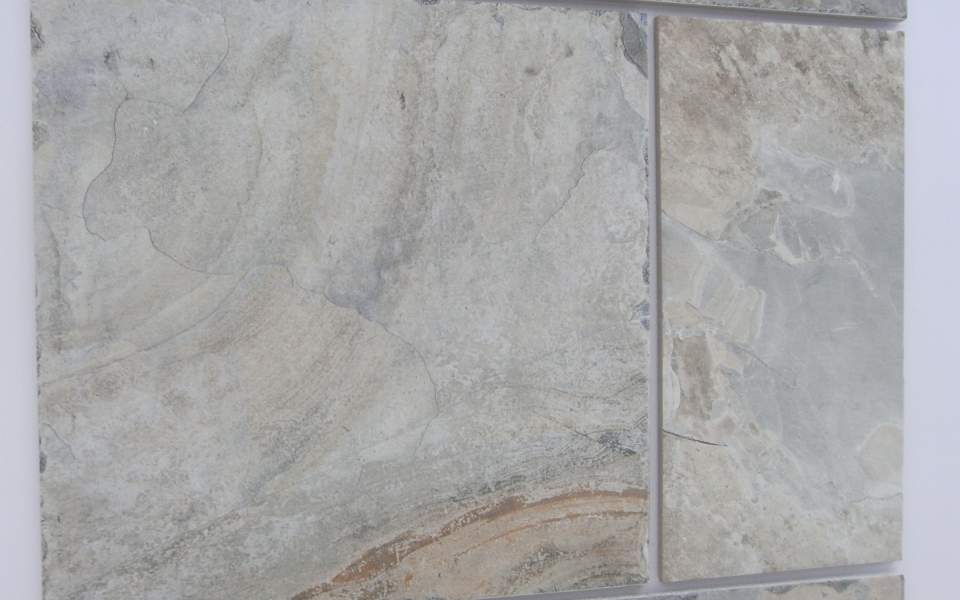Inkjet printing on ceramic tiles was introduced in the 1990s and in its infancy struggled to establish itself alongside industry dominant analogue decoration methods. In these early years, inkjet’s penetration into the ceramics market was hampered by the inability to produce inks with stable formulation and printhead technology which could not support reliable jetting of layer pigments required for ceramic tile printing. However, recent technological advancements such as the introduction of recirculating printhead technology have lead to a much greater acceptance of inkjet as a competitive methodology for industrial scale tile decoration. Requirements in the ceramics industry for shorter life cycle of products, unique aesthetic appearances and fast turnaround times all fit well with the benefits of inkjet.
Factories involved in mass production of ceramic tiles typically use drop-on-demand printing systems based on piezoelectric printheads. The advantage of drop on demand inkjet in terms of aesthetics is that all images printed appear high resolution and sharp when observed by the human eye. Colours are typically not CMYK but a specific colour set designed to print natural ceramic effects such as stone and marble. After printing is completed the tiles must undergo post-processing in the form of high temperature firing to ensure the image is correctly fixed to the tile. Additional processes can be used in decoration such as the application of sprays, glazes and metallic effects. The tiles are printed in a single pass using inks which are chemically engineered to be compatible with the existing firing process, meaning inkjet can be implemented easily into existing analogue production lines with no alterations required beyond the point of decoration.
High quality inks are essential for digital ceramic printing
In the ceramics industry, consumers and retailers are demanding unique products, high print quality, unorthodox tile shapes, short print runs and reduced costs. Demand is currently booming for replicated natural effects on tiles such as wood grain or marble. High quality effects such as these can be printed using inkjet technology. A key advantage for inkjet in the printing of natural effects is that a high level of randomisation is possible, meaning each tile can be different from the next and patterns are not repeated. This is not possible using analogue printing technology. The call for natural effects has predominantly been driven by industry trendsetters in Italy and Spain, who have already embraced digital technology. The fastest growing interest in digital technology is in countries such as China and India, where digital technology is being adopted in order to compete with European manufacturers and to meet growing domestic demands for ceramic tile products. In warmer countries where tiles are used as cladding for buildings and carpets are less prevalent, an innovative method of decoration such as inkjet is likely to be welcomed. The ability to print on textured tiles and tile edges also helps to set inkjet printing apart from other printing methods. All these factors suggest the rate of global installation of digital systems will continue growing. The current rate of growth for inkjet is estimated at 6% annually.
In this era of mass customisation and constantly changing consumer trends, the ability to make rapid alterations on a production job is becoming increasingly essential. When using inkjet technology changing jobs requires minimal down time and no additional cost. Changing designs when using an analogue system can take hours to replace equipment (such as rollers or rotary screens) and ensure the colour is correctly adjusted. With digital printing it is as economical to print one tile as a hundred thousand. For this reason digital printing is particularly useful for jobs where one offs or very small batches must be turned over quickly. This is a noteworthy advantage over analogue processes which may have to be running the same job for 5 to 6 weeks to become profitable. Digital is a non contact method so also eliminates the common problem of tile breakage which exists with analogue systems. Importantly, Digital allows for the printing of thinner tiles which reduces materials and creates less wastage.
Staff must undergo re-training when switching from analogue to digital printing to get the best results (training costs are usually minor or included when purchasing inks and/or systems). One of the key points for adaptation is that analogue printing typically requires constant monitoring and on the fly adjustments to ensure that print quality remains high. With an inkjet system, the machinery must be fully calibrated before the printing processes starts (adjustments during the process are not necessary for print quality to stay consistent). Since inkjet printing is a far more autonomous process than analogue, costs can be saved by having a more efficient but reduced work force. Digital and analogue technologies are not mutually exclusive; certain factories have implemented both digital and analogue production lines running parallel for different jobs. Inkjet printers can also be integrated and switched in and out of existing lines.
With an analogue system, at the beginning of the printing process while the machine is still being adjusted for print quality, all printed tiles (which have already undergone glazing) have to be scrapped until the print settings start to produce acceptable results. More scrappage also occurs later on in the print run, since analogue systems are prone to losing print quality over extended time. This can lead to prolonged periods of downtime while hardware is replaced (at additional cost). With inkjet printing, print quality is consistent throughout the run regardless of length. With analogue systems, only long runs are economically viable which means extra space and finance is required to store the large amount of inventory. If there is a surplus of inventory that cannot be sold, it must be discarded which also wastes money. Due to the lack of liquid waste, digital is arguably the most environmentally friendly method of tile decoration. The energy savings from using an inkjet system are also noteworthy since digital frits are smaller and thus require less time for firing in the kiln.
Tim Phillips, Catenary Solutions
Further reading:


